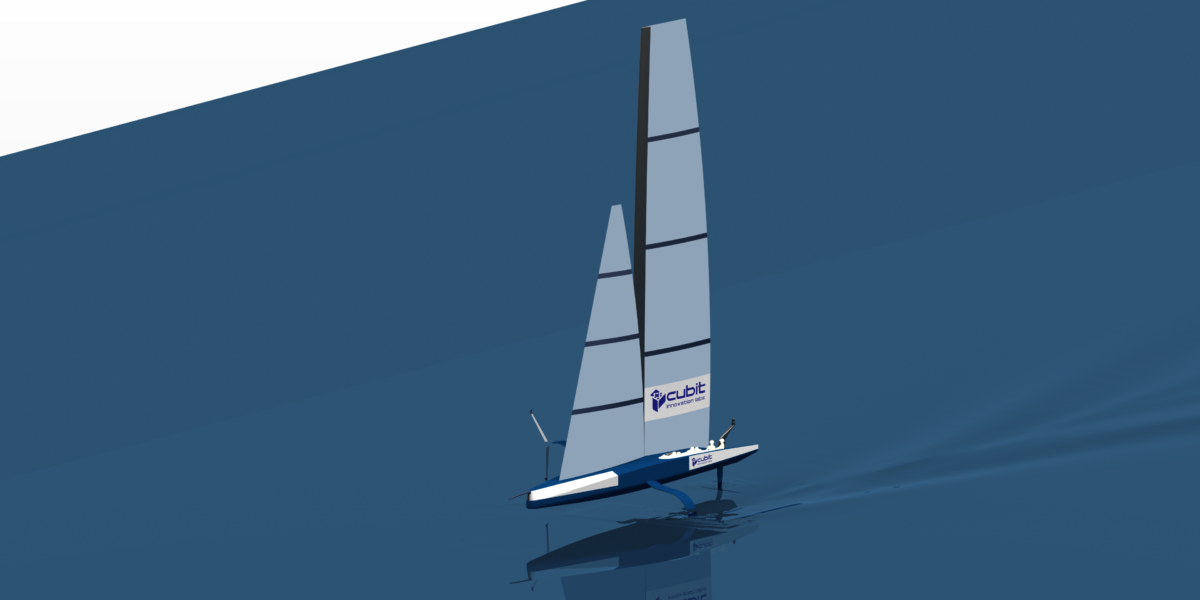The world of sailing boats has been revolutionized by the introduction of foils, both for multihulls, catamarans, trimarans, and monohulls.
By “foils,” we mean hydrodynamic appendages submerged or semi-submerged in the water, whose main function is to counteract leeway and heeling moment on the boat, as well as lift the boat vertically, minimizing the surface area in contact with the water.
The boats used in the America’s Cup have taken this concept to the extreme, managing to “fly” on the foils for long distances, in some cases throughout the entire duration of the races, as seen in the 2021 edition, without ever sailing in displacement conditions.
The introduction of foils and full foiling navigation has brought the worlds of aeronautics and sailing even closer than before. While sails essentially function as the wings of an airplane on a reach and upwind, these new devices have required a primarily technical and engineering revolution to design and understand the boats of the future.
Cubit, through its Fluidodynamics Division, has always been active in the marine sector, providing services, consulting, and expertise in the design of both sail and motor boats, thanks to the passion of its members and the nautical culture introduced by Prof. Lombardi, an expert sailor and fluid dynamics designer, serving as Technical Director.
The introduction of the AC75 class, the first fully flying monohulls known to the general public, inspired us to thoroughly study these new boats, also allowing us to leverage all our expertise in CFD analysis for the marine sector.
We started by creating a representative model of an AC75, although not an exact replica of the boats that took part in the Prada Cup and subsequently in the America’s Cup, it respected all the main regulations outlined in the rules.
The boat was then studied in various sailing conditions, including reaching, reaching in heavy weather, and upwind sailing. These boats can reach speeds higher than the wind speed, and therefore they are constantly sailing in upwind conditions.

To evaluate the effectiveness and actual functioning, the simulation allows the boat to rotate around its barycentric inertia axes, but it requires the calculation of the foil and sail settings. This procedure is complex but allows us to simulate the Digital Twin of the boat and avoid overly simplifying the functioning.
Given the complex balance management of the boats, as evidenced by some incidents that occurred during the races, special attention was given to the performance of the foils at different distances from the free surface of the water, in order to understand the nature of these incidents and generate new know-how for future projects.
Drawing inspiration from race situations, a critical condition highlighted was that of overtaking between close boats: the flow disturbed by the preceding boat affects the following one, compromising its performance and making overtaking particularly challenging, similar to what happens in modern Formula 1. The extreme aerodynamics, and hydrodynamics, of these boats perform at their best when they receive clean flow, becoming less efficient when significant disturbances are present.

This kind of simulations involve numerous models to implement and set in the fluid dynamics solver, requiring extensive experience and expertise to obtain high-quality and reliable simulations.
For Cubit, research is a priority activity to maintain the excellence of its methodologies and provide customers with innovative, customized solutions that ensure competitiveness in the market and create a technological gap with competitors. Anticipating market needs, we naturally conduct in-depth studies to identify the most interesting and stimulating themes emerging from industrial and sports realities, facilitating their easy application in less specialized fields.
We would like to thank engineers Rosellini and Pallo for their contributions to this extensive fluid dynamics research campaign through their Master’s thesis conducted in collaboration with the Department of Aerospace Engineering at the University of Pisa.


